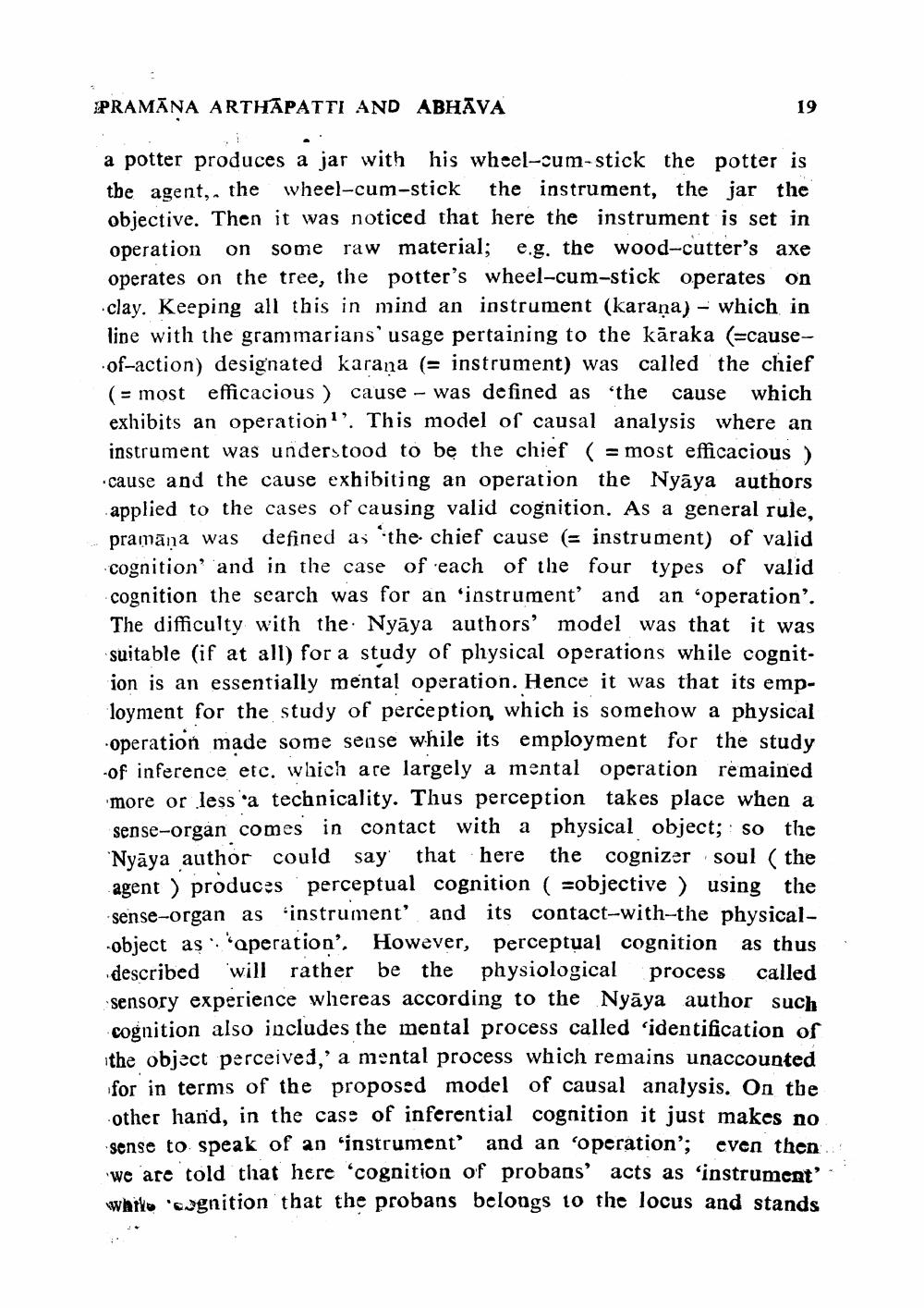________________
PRAMĀNA ARTHAPATTI AND ABHĀVA
a potter produces a jar with his wheel-cum-stick the potter is the agent, the wheel-cum-stick the instrument, the jar the objective. Then it was noticed that here the instrument is set in operation on some raw material; e.g. the wood-cutter's axe operates on the tree, the potter's wheel-cum-stick operates on clay. Keeping all this in mind an instrument (karana) - which in line with the grammarians'usage pertaining to the kāraka (=causeof-action) designated karana (= instrument) was called the chief (= most efficacious ) cause - was defined as the cause which exhibits an operation''. This model of causal analysis where an instrument was understood to be the chief ( = most efficacious) cause and the cause exhibiting an operation the Nyāya authors applied to the cases of causing valid cognition. As a general rule, pramāna was defined as the chief cause (= instrument) of valid cognition and in the case of each of the four types of valid cognition the search was for an instrument' and an operation'. The difficulty with the Nyāya authors' model was that it was suitable (if at all) for a study of physical operations while cognition is an essentially mental operation. Hence it was that its employment for the study of perception, which is somehow a physical operation made some sense while its employment for the study of inference etc. which are largely a mental operation remained more or less a technicality. Thus perception takes place when a sense-organ comes in contact with a physical object; so the Nyāya author could say that here the cognizer soul ( the agent ) produces perceptual cognition ( =objective ) using the sense-organ as 'instrument and its contact-with-the physicalobject as : "aperation'. However, perceptual cognition as thus described will rather be the physiological process called sensory experience whereas according to the Nyāya author such cognition also includes the mental process called 'identification of the object perceived,' a mental process which remains unaccounted for in terms of the proposed model of causal analysis. On the other hand, in the case of inferential cognition it just makes no sense to speak of an 'instrument' and an operation'; even then we are told that here 'cognition of probans' acts as 'instrument' whilo 'wagnition that the probans belongs to the locus and stands




